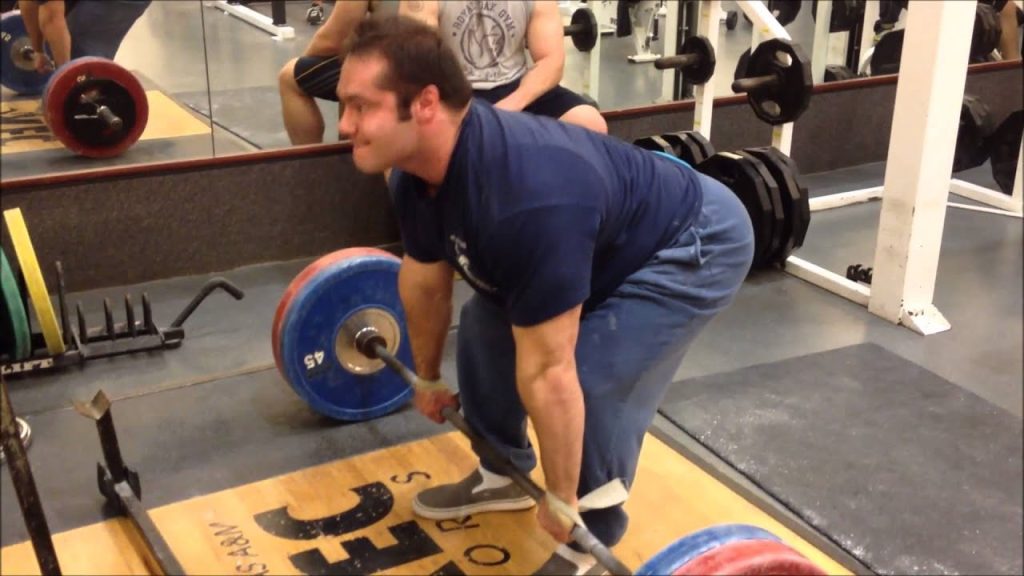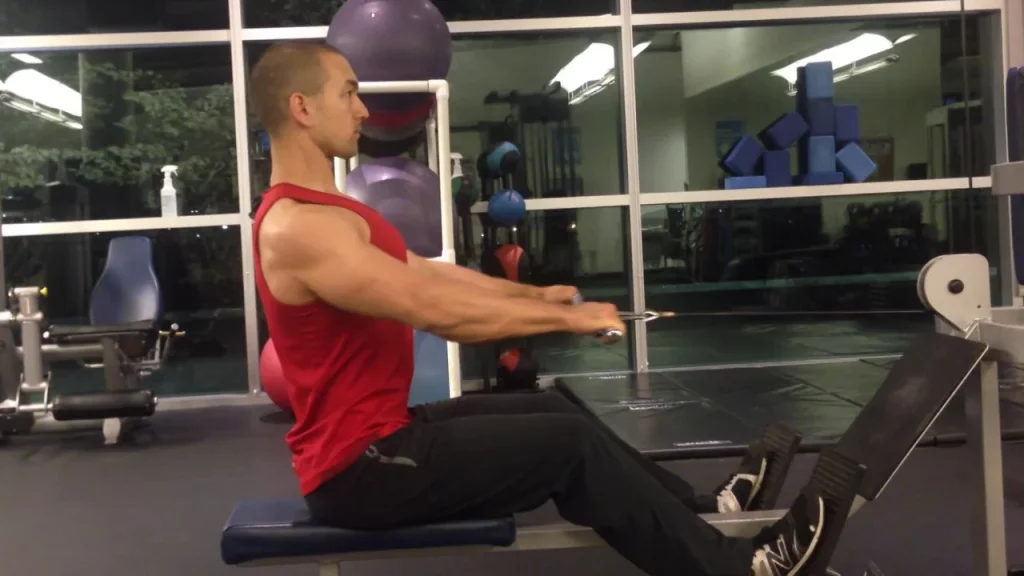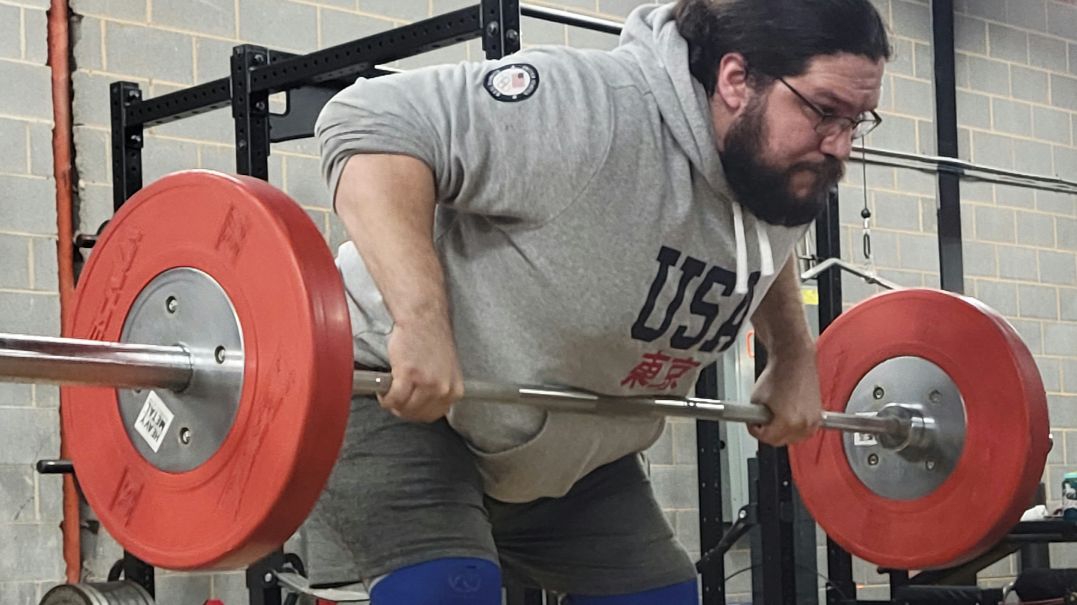Rowing exercises are super important when you’re into strength training. They’re not just about the back muscles, but also work on other parts, like the biceps and core. Doing rowing exercises helps with posture and overall fitness and makes you strong.
Now, let’s talk about two types: Seated Row and Bent Over Row. These are both good, but they’re a bit different. We’ll look at how they work, what’s good about each, and what you might need to be careful about.
This way, you can pick the one that suits you best based on what you want and how you like to work out.
A Table Showing The Differences Between Seated Row And Bent Over Row

Below is a table comparing the seated row and bent-over row exercises:
| Criteria | Seated Row | Bent-Over Row |
|---|---|---|
| Muscles Targeted | – Latissimus dorsi (lats) | – Latissimus dorsi (lats) |
| – Rhomboids | – Rhomboids | |
| – Trapezius | – Trapezius | |
| – Rear deltoids | – Erector spine (lower back) | |
| – Biceps | ||
| Body Position | Seated on a machine with chest against pad | Bent over at the hips, torso parallel to |
| Or using a cable machine. | the ground, holding a barbell or dumbbell | |
| Equipment | Cable machine or rowing machine | Barbells, dumbbells, or other weighted |
| implements | ||
| Range of Motion | Typically, a controlled and restricted | Generally, a larger range of motion as |
| Range of motion. | You pull the weight from the ground. | |
| Stability | More stable due to seated position | Requires more core stability and balance |
| And support from the machine. | To maintain the bent-over position. | |
| Risk of Injury | Lower risk of lower back strain or injury | Slightly higher risk of lower back strain |
| Due to seated position. | If the proper form is not maintained. | |
| Variations | Close grip, wide grip, v-bar grip | Barbell bent-over row, dumbbell row, |
| variations are possible. | T-bar row, etc. |
Maintaining proper form is also crucial to minimize the risk of injury for either exercise.
Seated Row
Targeted Muscle Groups and Benefits:
Targeted Muscle Groups:
Latissimus Dorsi: The primary muscle worked during seated rows is responsible for the width of the upper back.
Rhomboids: Assist in the retraction of the shoulder blades.
Trapezius (Upper): Engaged during the pulling motion.
Benefits:
Muscle Development: Seated rows contribute to developing a well-defined and strong upper back.
Improved Posture: Strengthening the upper back muscles helps maintain good posture.
Functional Strength: Enhances the strength and stability of the back, beneficial for daily activities and other exercises.
Equipment Variations:
Cable Machine:
The cable machine ensures consistent tension throughout the entire movement.
Various handle attachments allow for different grip positions.
Resistance Bands:
Bands offer a different resistance profile, challenging your muscles at different points in the range of motion.
Suitable for home workouts and portable training.
Free Weights:
Barbell Rows: Performing bent-over barbell rows while seated on a bench.
Dumbbell Rows: Performing the exercise with two dumbbells for unilateral training.
Machine Variations:
Plate-Loaded Machines: Some gyms may have plate-loaded seated-row machines.
Lever Machines: Lever systems with a guided range of motion for added stability.
Choose the equipment variation that aligns with your fitness level, preferences, and resources. Always prioritize safety and proper form to maximize the benefits of the seated-row exercise.
Bent Over Row
Exercise Technique and Proper Form:
The bent-over row is a compound exercise mainly focusing on the muscles in your upper back, especially the latissimus dorsi, rhomboids, and traps.
Ensuring proper form is essential for safety and effectiveness. Follow this step-by-step guide to master the bent-over row technique:
Setup:
Stand with your feet shoulder-width apart.
Grab the barbell with an overhand grip, and make sure your hands are a bit wider than your shoulders.
Bend at your hips, maintaining a straight back and lifting your chest. Your torso should be approximately parallel to the ground.
Body Position:
Engage your core to stabilize your spine.
Keep your head in a neutral position, looking down towards the floor.
Keep your shoulders relaxed and let your arms hang straight down.
During the pulling motion, draw the barbell towards your lower chest or upper abdomen by retracting your shoulder blades.
Keep your elbows close to your body, pointing them back rather than out to the sides.
Squeeze your back muscles at the top of the movement.
Return:
Lower the barbell in a controlled manner, fully extending your arms.
Keep tension in your back muscles throughout the entire range of motion.
Muscles Worked and Advantages:
Muscles Worked:
Latissimus Dorsi: Primary muscle responsible for the width of the upper back.
Rhomboids: Engaged during the retraction of the shoulder blades.
Trapezius (Upper): Worked during the pulling motion.
Posterior Deltoids: Involved in the shoulder movement.
Advantages:
Muscle Development: The bent-over row is effective for building overall back muscle mass and strength.
Functional Strength: Improves muscle strength that contributes to good posture and daily activities.
Compound Exercise: Targets multiple muscle groups in a single movement, making it time-efficient for a full back workout.
Variations:
Barbell Bent Over Row:
Using a barbell provides a stable grip and allows you to lift heavier weights.
Commonly performed with a pronated (overhand) grip.
Dumbbell Bent Over Row:
Each arm works independently, addressing muscle imbalances.
Requires additional stabilization, engaging core muscles.
T-Bar Row:
Utilizes a T-bar row machine or landmine attachment.
Allows for a slightly different pulling angle compared to barbell rows.
Kroc Row:
A high-repetition variation of the dumbbell row, named after powerlifter Matt Kroc.
Involves using a very heavy dumbbell for maximum muscle engagement.
Meadows Row:
Named after bodybuilder John Meadows, involves a single-arm dumbbell row with a unique body position to emphasize the lats.
Choose the variation that suits your preferences, equipment availability, and fitness goals. Incorporating different rowing exercises into your routine can provide a well-rounded approach to developing a strong, defined upper back.
Always prioritize proper form and gradually increase weights to ensure safe progression.
Muscle Engagement and Focus
Comparing the Emphasis on Different Muscle Groups in Each Exercise:
Seated Row:
Primary Emphasis:
Latissimus Dorsi: The primary muscle worked during seated rows, contributing to back width.
Secondary Emphasis:
Rhomboids: Assist in the retraction of the shoulder blades.
Trapezius (Upper): Engaged during the pulling motion.
Tertiary Emphasis:
Biceps: Act as synergists in the pulling motion.
Bent Over Row:
Primary Emphasis:
Latissimus Dorsi is a major contributor to back width and thickness.
Rhomboids: Engaged during the retraction phase.
Secondary Emphasis:
Trapezius (Upper): Involved in the shoulder movement.
Posterior Deltoids: Participate in the pulling motion.
Tertiary Emphasis:
Erector Spinae: Engaged to stabilize the lower back during the bent-over position.
Discussing How Body Positioning Influences Muscle Activation:
Seated Row:
Body Position:
Sitting on a machine with a fixed position minimizes lower back involvement.
Muscle Activation:
Emphasis on isolating the upper back muscles.
Minimized stress on the lower back allows for a more controlled and targeted workout.
Bent Over Row:
Body Position:
Bent at the hips with the torso nearly parallel to the ground.
Muscle Activation:
Engages a larger portion of the back and requires stabilization from the erector spinae.
Forces the core to work to maintain proper form, contributing to overall stability.
Comparison:
Isolation vs. Compound:
Seated row isolates the upper back muscles more effectively due to the stabilized position.
Bent over row is a compound movement involving multiple muscle groups, offering a more comprehensive workout.
Lower Back Involvement:
The seated row reduces strain on the lower back, making it suitable for individuals dealing with lower back issues.
Bent over row challenges the erector spinae and contributes to overall lower back strength but may not be suitable for those with pre-existing lower back problems.
Versatility:
Seated rows can be adapted for various equipment, including cable machines and resistance bands.
Bent over row offers variations like barbell, dumbbell, T-bar, and more, providing flexibility in training.
Understanding muscle engagement and the impact of body positioning in each exercise allows individuals to tailor their workouts to specific goals and address personal considerations, such as injury history or preferences.
Incorporating both seated rows and bent-over rows into a well-rounded training program can provide a balanced approach to upper back development.
Injury Considerations
Examining Potential Strain or Injury Risks Associated with Each Exercise:
Seated Row:
Potential Risks:
Lower Back Strain: If the seat is not adjusted correctly, it may lead to lower back strain.
Overuse Injuries: Excessive volume or improper form can contribute to overuse injuries, particularly in the shoulder or elbow joints.
Tips for Prevention:
Ensure the seat is set at an appropriate height to maintain a neutral spine.
Gradually increase the weight and prioritize proper form over lifting heavier loads.
Include adequate warm-up and mobility exercises for the shoulders and upper back.
Bent Over Row:
Potential Risks:
Lower Back Strain: The bent-over position can strain the lower back, especially if the weight is too heavy or lacks core stability.
Shoulder Impingement: Incorrect form or excessively high elbows may contribute to shoulder impingement.
Tips for Prevention:
Concentrate on keeping a flat back and a neutral spine throughout the entire movement.
Use an appropriate weight that allows you to control the movement without compromising form.
Perform warm-up exercises targeting the lower back, shoulders, and upper back.
Providing Tips for Injury Prevention and Proper Form:
General Tips:
Prioritize Warm-Up: Always warm up before engaging in rowing exercises. Include dynamic stretches and mobility exercises to prepare the muscles and joints.
Begin with lighter weights to master the technique before moving on to heavier loads.
Emphasize controlled movements and avoid relying on momentum to lift the weight.
Pay attention to the movement’s eccentric (lowering) phase to prevent sudden strain.
Seated Row:
Seat Adjustment: Ensure the seat is adjusted to a height that allows your back to stay flat against the pad, preventing unnecessary stress on the lower back.
Elbow Position: Keep the elbows close to your body to reduce strain on the shoulder joints.
Avoid Excessive Forward Lean: Maintain a stable and upright torso to avoid excessive forward lean, which could strain the lower back.
Bent Over Row:
Flat Back: Keep your back flat and chest up throughout the movement to minimize stress on the lower back.
Elbow Position: Maintain a natural and slightly forward elbow position to prevent excessive stress on the shoulder joints.
Use Proper Grip: Ensure a secure grip on the barbell or dumbbells to prevent accidental slips.
Both Exercises:
Listen to Your Body: Pay attention to any discomfort or pain during the exercises. If you experience pain, stop the exercise and reassess your form.
Include Mobility Work: Incorporate regular mobility exercises and stretches to maintain joint health and flexibility.
Remember, if you have pre-existing conditions or concerns about potential injuries, it’s advisable to consult with a fitness professional or healthcare provider before incorporating new exercises into your routine.
Training Goals and Suitability

Tailoring Rowing Exercises to Specific Fitness Goals:
Muscle Hypertrophy (Size):
Seated Row:
Allows for better isolation of the upper back muscles, making it effective for targeted muscle hypertrophy.
Utilizing different grips and attachments on cable machines can emphasize specific areas of the back.
Bent Over Row:
Engages multiple muscle groups, providing a more comprehensive approach to overall back development.
Well-suited for individuals looking to build both width and thickness in the upper back.
Strength and Power:
Seated Row:
It can be used to build foundational strength, especially for those who are new to resistance training.
Offers a controlled environment for lifting heavier weights.
Bent Over Row:
Challenges the entire posterior chain, promoting overall strength and power.
Suitable for those focusing on compound movements to enhance functional strength.
Functional Strength and Stability:
Seated Row:
Provides stability, making it suitable for individuals with lower back issues or those prioritizing controlled, stable movements.
Useful for isolating and strengthening specific back muscles without involving the lower back extensively.
Bent Over Row:
Requires core engagement and stabilization, contributing to functional strength.
Enhances overall stability and balance due to the bent-over position, making it beneficial for functional training.
Injury Rehabilitation or Prevention:
Bent Over Row:
Individuals with a history of lower back issues should approach with caution and may need to modify the exercise.
Suitable for injury prevention by strengthening the entire back and improving posture.
Addressing Which Exercise Might Be More Suitable for Different Individuals:
Beginners:
Seated Row:
Provides a stable environment for beginners to learn and practice proper pulling mechanics.
Reduces the risk of lower back strain associated with the bent-over position.
Individuals with Lower Back Issues:
Advanced Lifters:
Bent Over Row:
Offers a more challenging, compound movement suitable for advanced lifters seeking greater muscle engagement and overall back development.
Allows for the use of heavier weights to further stimulate muscle growth.
Functional Training Enthusiasts:
Bent Over Row:
Requires core engagement and stability, contributing to functional strength and balance.
Mimics’ real-life movements make it beneficial for those emphasizing functional training.
Those Emphasizing Isolation:
Seated Row:
Allows for better isolation of specific back muscles, making it suitable for those looking to target and develop particular upper back areas.
Individualizing Based on Preferences and Goals:
Both Exercises:
Individuals can incorporate both seated rows and bent-over rows into their routine based on personal preferences, equipment availability, and specific training goals.
Variation in training helps prevent boredom and provides a well-rounded approach to back development.
Ultimately, the choice between a seated row and an over row depends on individual preferences, fitness levels, and specific goals.
Incorporating a mix of both exercises into a well-rounded training program can offer a comprehensive approach to upper back development.
Equipment and Accessibility
Discussing the Availability of Equipment for Both Exercises:
Seated Row:
Gym Machines:
Most gyms are equipped with seated row machines, usually part of cable-based or plate-loaded machines.
Adjustable seats and various handle attachments provide versatility.
Cable Machines:
Seated rows can be performed using cable machines with low pulleys and an adjustable bench or seat.
Different cable attachments allow for variations in grip and muscle engagement.
Resistance Bands:
Seated rows can be adapted for home workouts using resistance bands anchored to a stable structure.
Bent Over Row:
Barbells:
Barbells are a common and versatile choice for bent-over rows in most gym settings.
Allows for progressive loading with the use of weight plates.
Dumbbells:
Dumbbells provide an alternative for individuals who prefer unilateral training or have imbalances.
Suitable for home workouts and gym settings.
T-Bar Row Machines:
Some gyms may have specific T-Bar row machines, providing a guided range of motion.
Mimics the bent-over row motion with added stability.
Landmine Attachment:
The landmine attachment is versatile and can be used for T-Bar rows or one-arm rows.
Commonly available in many gyms.
Tips for Adapting Rowing Exercises Based on Available Gym Equipment:
Limited Equipment:
Seated Row:
If a seated row machine is not available, use resistance bands anchored to a stable structure for a similar pulling motion.
Utilize a low cable pulley for seated rows if a dedicated machine is not accessible.
Bent Over Row:
If barbells are not available, use dumbbells for a unilateral version of the exercise.
Perform bent over rows using resistance bands anchored to a stable structure.
Home Workouts:
Seated Row:
Invest in resistance bands with handles for a portable option that simulates seated row movements.
Utilize cable machines if available for home use.
Bent Over Row:
Use dumbbells or resistance bands for bent over rows at home.
Explore bodyweight variations or find creative alternatives to replicate the rowing motion.
Improvisation:
Seated Row:
If no specialized equipment is available, use a sturdy object as an anchor point for resistance bands.
Perform bodyweight exercises that engage similar muscles, such as inverted rows.
Bent Over Row:
Utilize household objects as makeshift weights for improvised dumbbell or barbell rows.
Perform bodyweight exercises like inverted rows or bodyweight rows.
Gym Variation:
Seated Row:
Experiment with different handle attachments on cable machines to target various grip positions.
Use plate-loaded machines as an alternative to traditional cable-based seated rows.
Bent Over Row:
Incorporate variations like T-Bar rows using specialized machines if available.
Explore different grip options on barbells to target different areas of the back.
Adapting rowing exercises based on equipment availability allows for a flexible and effective training approach.
Whether at the gym or home, individuals can achieve a challenging workout by creatively using the equipment at their disposal or incorporating alternative exercises targeting similar muscle groups.
Incorporating Variety into Workouts

Highlighting the Benefits of Incorporating Both Seated and Bent Over Rows:
Targeted Muscle Engagement:
Seated Row:
Isolates the upper back muscles, emphasizing the lats and rhomboids.
Provides a controlled environment for focused muscle engagement.
Bent Over Row:
Engages multiple muscle groups, promoting overall back development.
Targets both the width and thickness of the upper back.
Joint Health and Flexibility:
Seated Row:
Minimizes stress on the lower back, making it suitable for individuals with lower back concerns.
Allows for individuals to work on flexibility and joint health without compromising stability.
Bent Over Row:
Challenges the entire posterior chain, enhancing joint flexibility and strengthening the lower back.
Requires core stabilization, contributing to overall stability and balance.
Functional Strength:
Seated Row:
Focuses on targeted muscle isolation, which may be beneficial for individuals with specific goals or rehabilitation needs.
Suitable for those emphasizing muscle activation without a heavy demand on stabilizing muscles.
Bent Over Row:
Engages the core and stabilizes muscles, promoting functional strength.
Mimics’ real-life movements contribute to improved overall stability and balance.
Preventing Plateaus:
Seated Row:
Useful for breaking through plateaus by isolating specific muscle groups.
Allows for targeted training to address weaknesses or imbalances.
Bent Over Row:
Offers variety in movement patterns, preventing monotony in a training routine.
Challenges the body in different ways, promoting continuous adaptation and progress.
Creating a Well-Rounded Strength Training Routine:
Include Both Seated and Bent Over Rows:
Incorporate both seated rows and bent over rows in your routine to target different aspects of back development.
Utilize the benefits of isolation and compound movements for a comprehensive approach.
Vary Grip Positions and Equipment:
Experiment with different grip positions on seated rows, such as wide grip, narrow grip, or reverse grip.
Use various equipment variations for both exercises, such as cable machines, resistance bands, barbells, and dumbbells.
Balance Push and Pull Movements:
Ensure a balanced strength training routine by combining rowing exercises with pushing movements like bench presses or overhead presses.
Promote symmetry and reduce the risk of muscle imbalances.
Include Other Back Exercises:
Incorporate a variety of back exercises, such as pull-ups, chin-ups, and lat pulldowns, to target different angles and muscle groups.
Include exercises that work the lower back, such as hyperextensions or good mornings.
Adjust Rep Ranges and Intensity:
Periodize your training by adjusting rep ranges and intensity levels to prevent stagnation.
Incorporate phases of higher and lower repetitions and varying levels of resistance.
Listen to Your Body:
Pay attention to how your body responds to different exercises.
Modify your routine based on your individual goals, preferences, and any specific needs or limitations.
Incorporating variety into your strength training routine keeps workouts interesting and ensures a more balanced and well-rounded development of your muscles.
Both seated and bent over rows, when used together with other complementary exercises, contribute to a comprehensive approach to back training, promoting strength, stability, and functional fitness.
Real-world Application and Sports Performance
Discussing How These Rowing Exercises Translate to Real-world Movements:
Seated Row:
Real-world Translation:
The seated row, with its focus on isolating upper back muscles, can be likened to movements involving pulling or lifting objects toward the body.
Mimics’ actions include closing a car door, lifting groceries, or pulling a suitcase.
Functional Aspect:
Emphasizes controlled pulling motions, aligning with daily activities that require precision and muscle engagement.
Provides a foundation for building strength in targeted muscle groups without the demand for extensive stabilization.
Bent Over Row:
Real-world Translation:
The bent over row, being a compound movement, mirrors actions like lifting and pulling heavy objects from the ground.
Similar to movements involved in manual labor or tasks requiring a strong and stable back.
Functional Aspect:
Engages the entire posterior chain, promoting a more comprehensive approach to functional strength.
Requires core stabilization, enhancing the ability to maintain balance during activities involving forward leaning or bending.
Examining Their Relevance to Sports Performance and Functional Fitness:
Seated Row:
Sports Performance:
It may be relevant in sports requiring precise upper body control, such as archery or shooting.
Benefits athletes involved in activities that demand isolated upper back strength without excessive torso movement.
Functional Fitness:
Useful for individuals focused on general fitness, particularly those with lower back concerns or beginners building foundational strength.
Supports overall upper back development, improving posture and reducing risk of upper body imbalances.
Bent Over Row:
Sports Performance:
Highly relevant for sports that involve explosive pulling movements, such as rowing, swimming, or certain throwing sports.
Enhances overall back strength, which is crucial for athletes requiring a strong and stable base.
Functional Fitness:
Aligns well with functional fitness programs by incorporating compound movements that mimic daily activities.
Strengthens the posterior chain, promoting balance and stability during various functional tasks.
Combined Approach:
Sports Performance:
Incorporating both seated and bent over rows ensures a well-rounded back development, contributing to overall athletic performance.
Enhances strength, stability, and power, all of which are valuable in a variety of sports.
Functional Fitness:
Utilizing a combination of seated and bent over rows provides versatility in training, addressing both isolated and compound movement patterns.
Supports a holistic approach to functional fitness by targeting different muscle groups and movement patterns.
Injury Prevention:
Seated Row:
Offers a safer option for those with lower back concerns, contributing to injury prevention.
Suitable for rehabilitation and individuals looking to minimize strain on the lower back.
Bent Over Row:
Strengthens the lower back and core, contributing to injury prevention by improving stability.
Helps build resilience against injuries associated with lifting and bending movements.
In summary, seated and bent over rows are relevant in real-world movements, sports performance, and functional fitness.
The choice between these exercises may depend on individual goals, fitness levels, and considerations such as injury history.
Combining both exercises into a well-designed training program provides a balanced approach to back development and overall functional strength.
FAQs
What muscles are worked during bent over rows?
Answer: Bent over rows engage multiple muscle groups, including the lats, rhomboids, traps, rear delts, and lower back.
Are seated rows or bent over rows better for building overall back strength?
Answer: Both exercises are effective, but bent over rows may engage a broader range of muscles and promote better overall back strength.
Which exercise is more suitable for beginners?
Answer: Seated rows are often more beginner-friendly as they provide better back support and involve a more controlled movement than bent over rows.
Are seated rows and bent over rows interchangeable in a workout routine?
Answer: While they target similar muscle groups, incorporating both seated rows and bent over rows can provide a more comprehensive back workout, ensuring balanced muscle development.
Do seated rows or bent over rows have a greater range of motion?
Answer: Bent over rows generally offer a greater range of motion as they involve bending at the hips, allowing for a more extended movement
than seated rows.
Can seated rows and bent over rows be included in the same workout session?
Answer: Yes, incorporating both seated rows and bent over rows in the same workout session can provide a well-rounded back training routine, targeting different angles and muscle fibers.
Conclusion
If you’re starting out, go for seated rows – it’s simpler and safer for your back. But as you progress, mixing in bent over rows can give you a more complete back workout, targeting a wider range of muscles.
So, start with seated, then throw in some bent over rows for a strong and balanced back!










